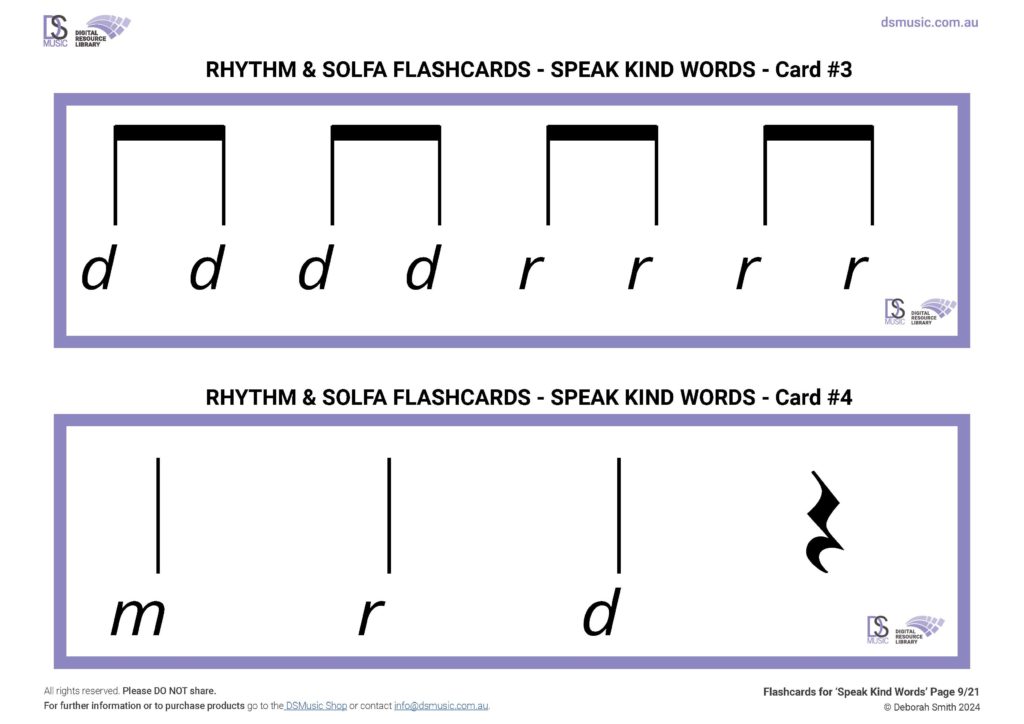3 Ways to Use Flashcards in Your Music Classroom
Comments Off on 3 Ways to Use Flashcards in Your Music ClassroomFlashcards have to be one of the most useful resources a teacher can have in their classroom!
Use them to save you having to write on the board or let the kids use them to recognise – and match the visual symbols to – what they hear. Use them to play a game with, to create with and to dictate from!
Flashcard activities can easily form a part of every music lesson, regardless of what stage of learning your class is at and are a great way to prepare for a transcription activity or any activities that use the elements targeted in the flashcards themselves.
Read on for lots of ideas for how to use Flashcards along with links to some great activities, available via the Music Teachers’ Digital Library (note, some are free, but others are only accessible with a subscription).
Sightreading
- Use flashcards that ONLY include known rhythms or pitches.
- Students should keep a steady beat (quietly) throughout the activity.
- Hold flashcards so students can see one at a time.
- Allow inner hearing time for each flashcard.
- Pointing to each beat on the card can help students follow.
- This video is an example of sightreading from Rhythmic Flashcards.
Click here to access Crotchets, Quavers, Crotchet Rests & Semiquavers Flashcards.
Sightreading Variations
- Poison Rhythm/Melody – where one rhythm (e.g. semiquavers) or pitch (e.g. so) is chosen and students must NOT say/sing those out loud (inner hear instead).
- Poison Rhythm/Melody – where one rhythm (e.g. crotchets) or pitch (e.g. re) is chosen and students must NOT say/sing those out loud (inner hear instead).
- Halvies – one half of the class say the rhythm name of the rhythm (e.g. crotchets) or pitch being focused on (e.g. la) while the other half say all else.
- Read and Remember – students memorise the first card being shown, when the second card is shown they have to say the rhythm names or sing the solfa/letter names of the first card while memorising the second and so on.
- FCBP – (Flashcard Body Percussion) choose a different action for each rhythmic element (or pitch) on the cards e.g. a crotchet may be clapped while semiquavers may be clicked and so on. Students inner hear the rhythm names as they perform the body percussion actions and the teacher keeps a steady beat on claves or similar.

Build It Up
- Have flashcards with individual known rhythms (see Simple Time flashcards here) or pitches.
- Warm up the class by singing several songs that only use the rhythms and/or pitches on the individual rhythmic flashcards.
- Divide the class into teams and provide each team with a set of these flashcards. For example, 12 x crotchet cards, 8 x pairs of quaver cards and 5 x crotchet rest cards will ‘make’ most Crotchets, Quavers and Crotchet Rests songs.
- Announce the name of the song you have chosen and start a stopwatch. The teams begin to create the rhythm and/or melody of that song using the above cards.
- When one team thinks they have it correctly the clock is stopped and all teams cease working.
- The team that thinks they have it sing the rhythm names/solfa of the song. If correct, they win, if incorrect, the clock is started again and the activity continues until one team has the song correctly.
Click here to see an example of this practice activity using flashcards.

How can DSMusic resources support you?
There’s a ever-growing collection of flashcard resources in the Music Teachers’ Digital Library (MTDL), so click here to view these.
There’s also an extended version of this blog post available to MTDL subscribers with a lot more suggestions, activities, links and strategies for finding the fun in flashcards!
And remember…
Whether you’re looking for a way to gamify rhythm, throw in a few brain breaks or offer your classes lots of different ways to practice these musicianship concepts, flashcards are a great go-to!
Happy flashcarding, everyone! – Deb



Comments are closed